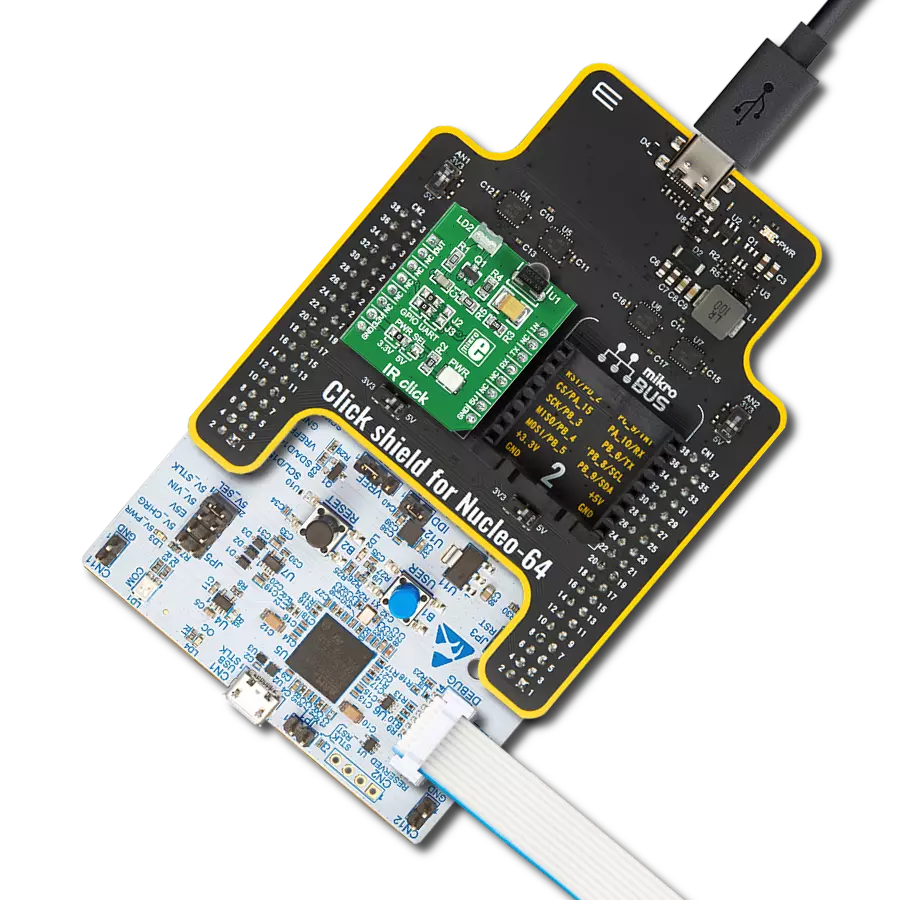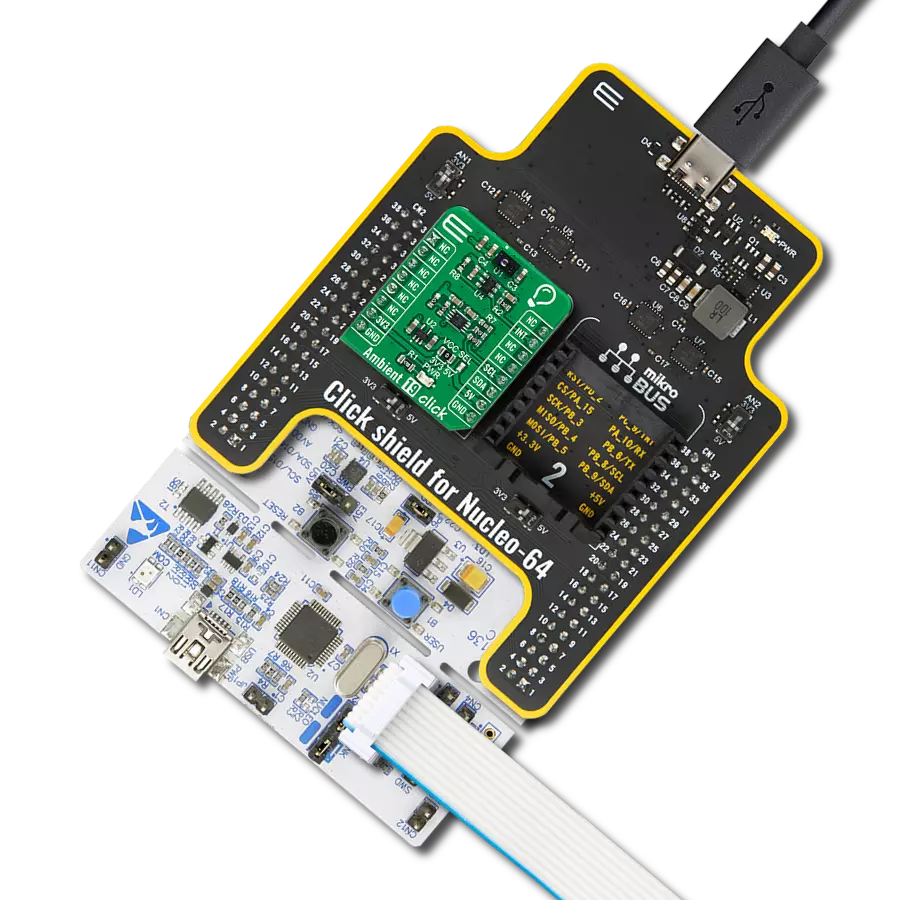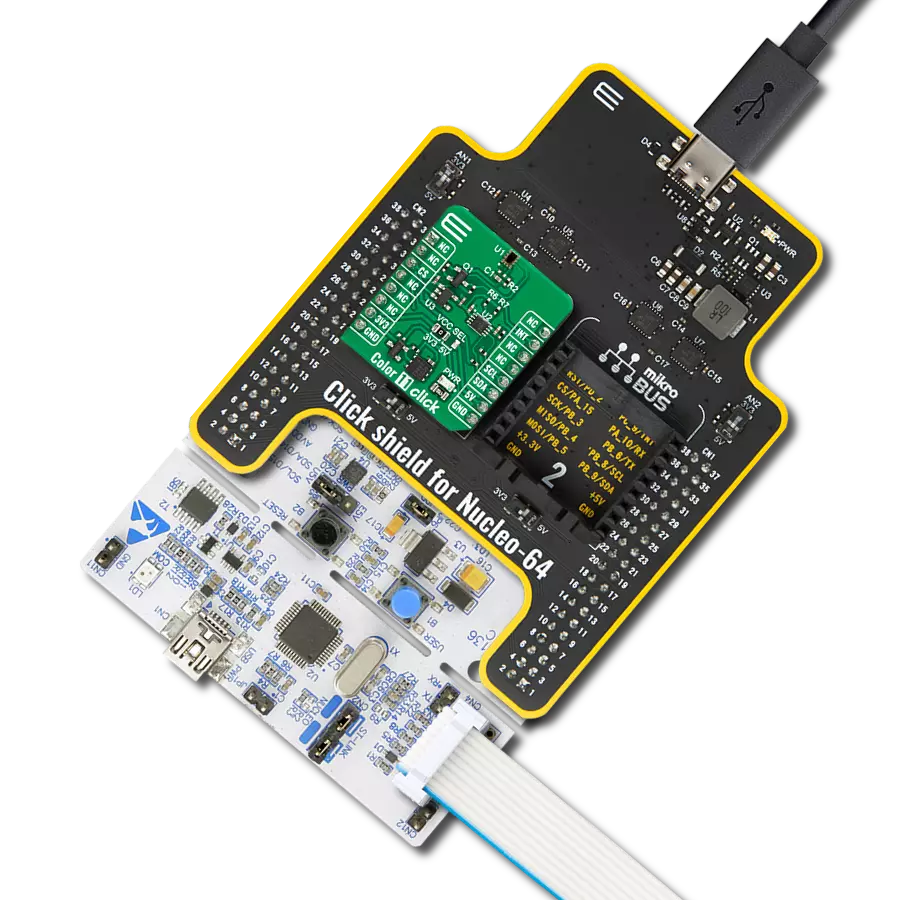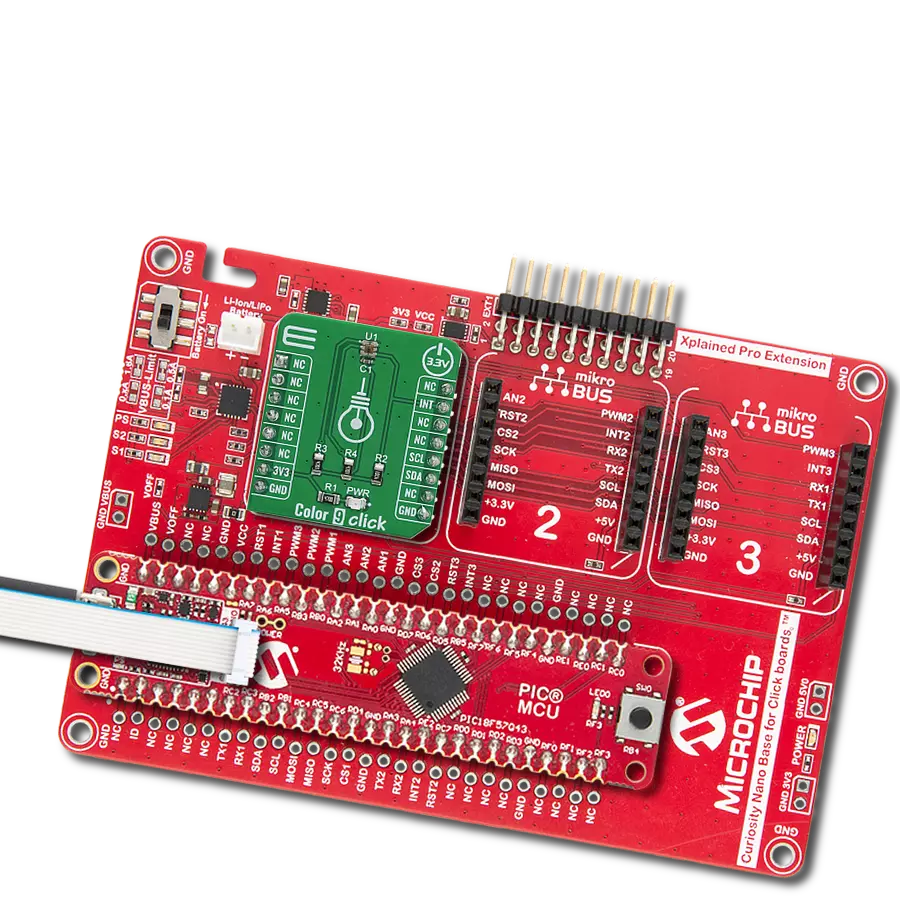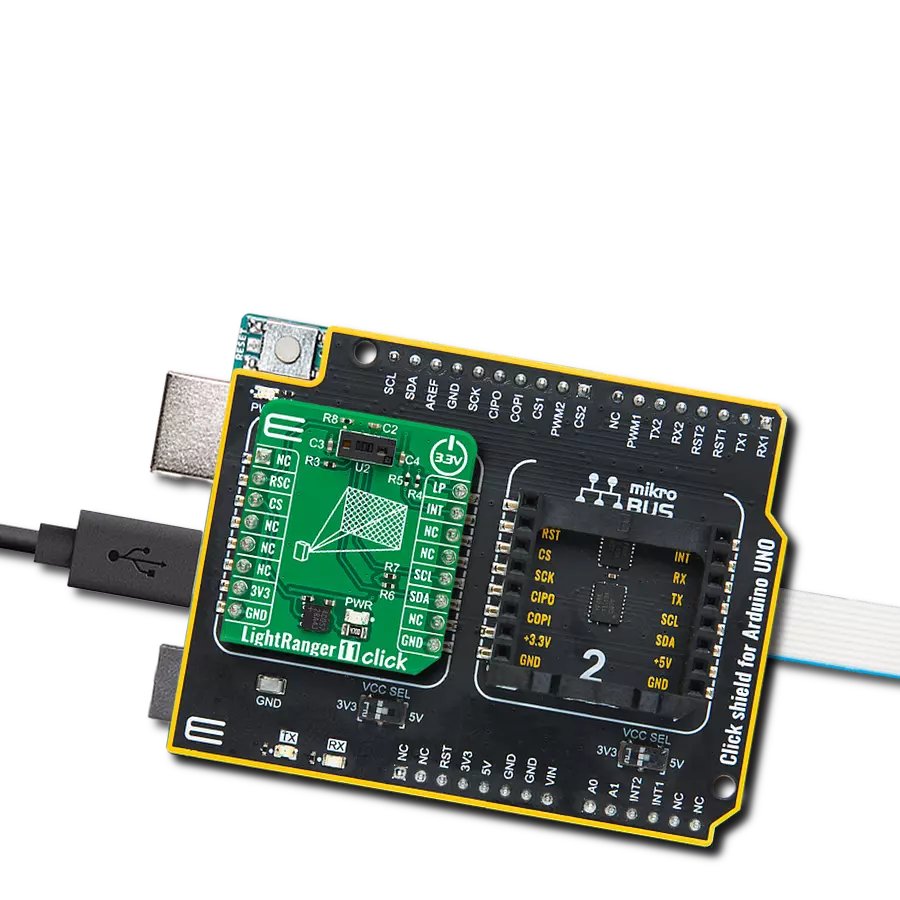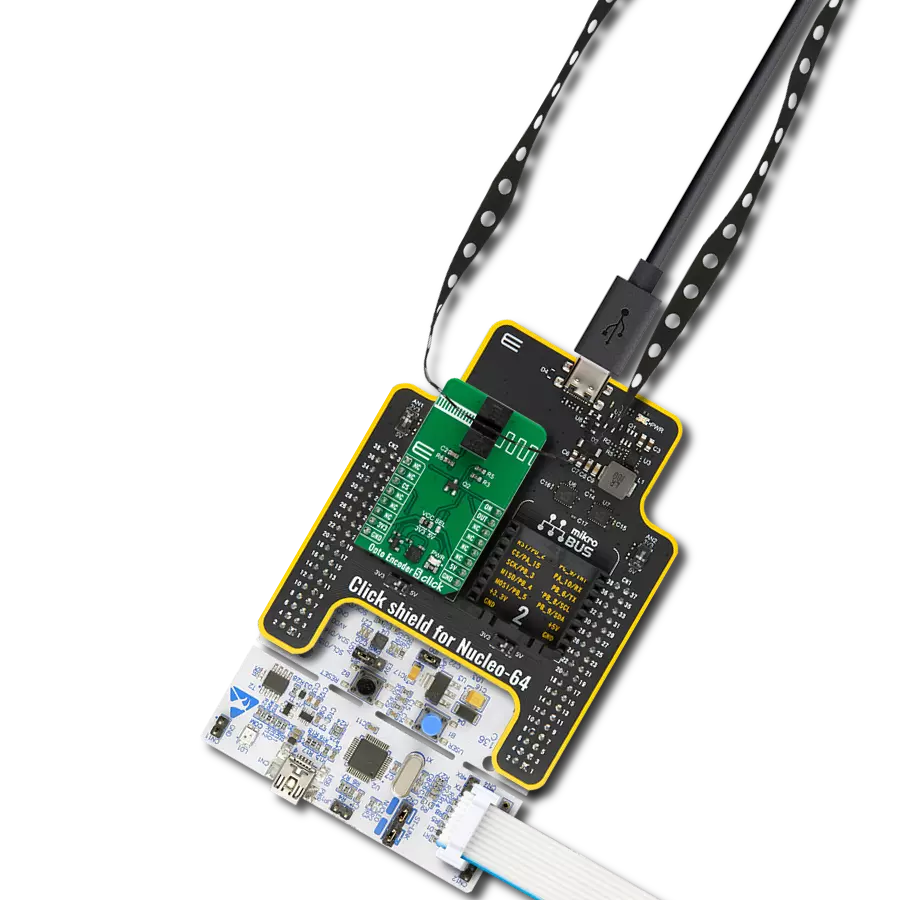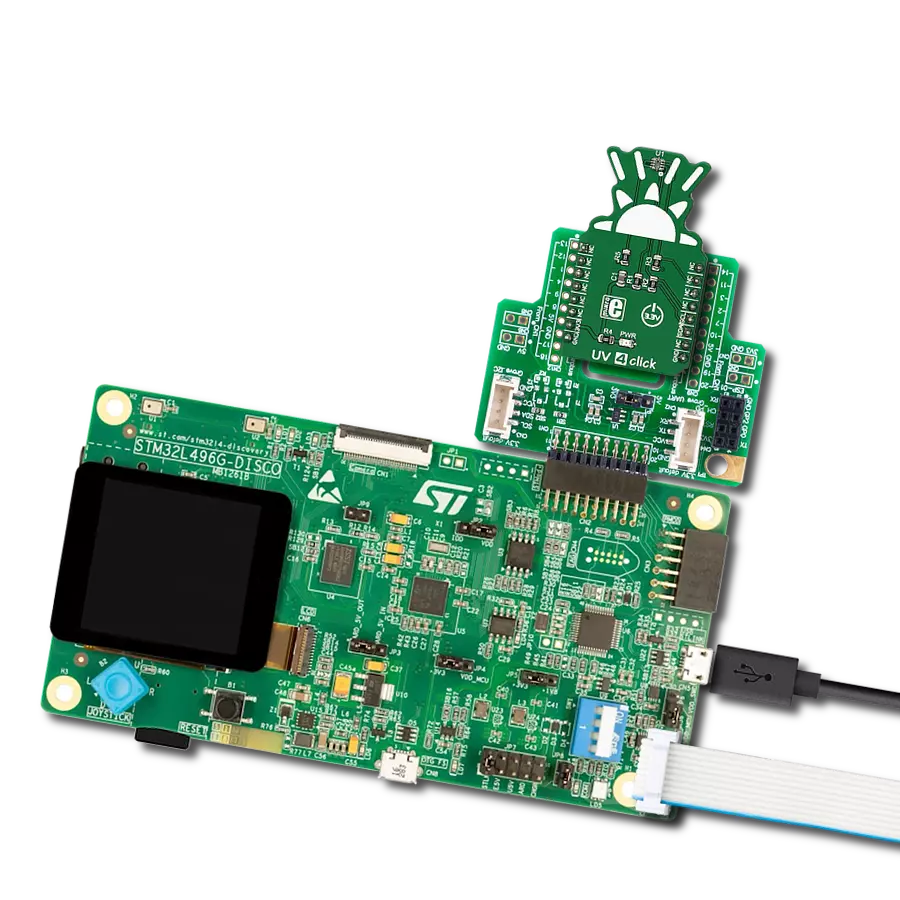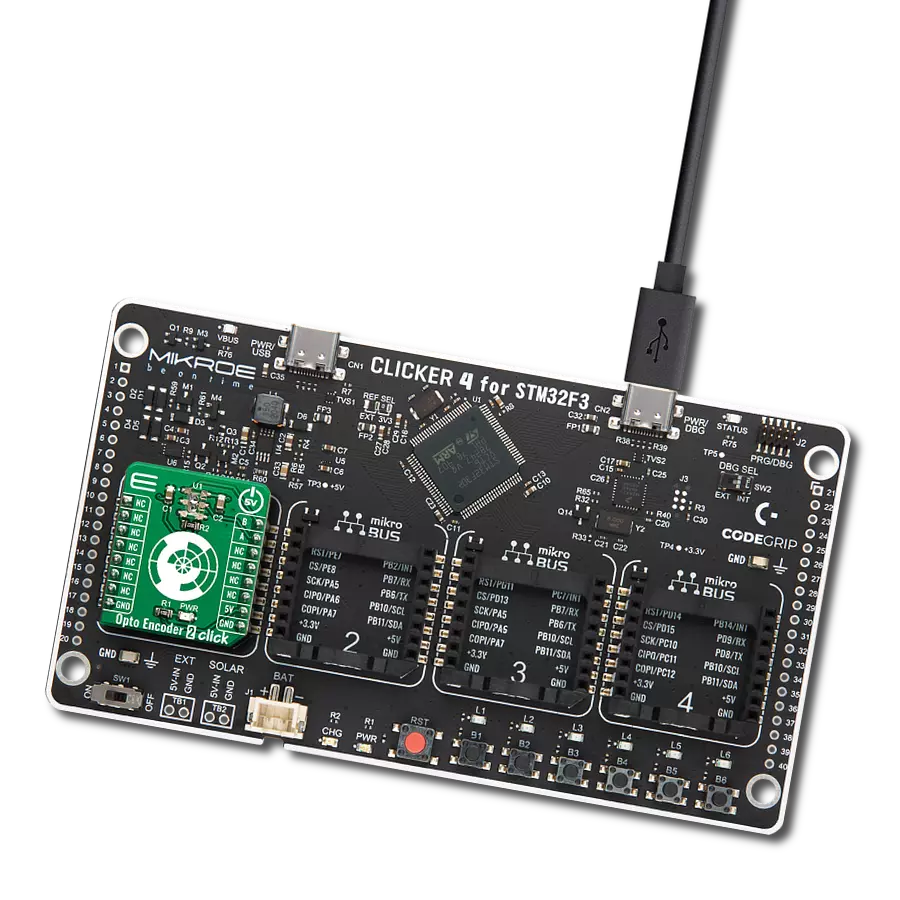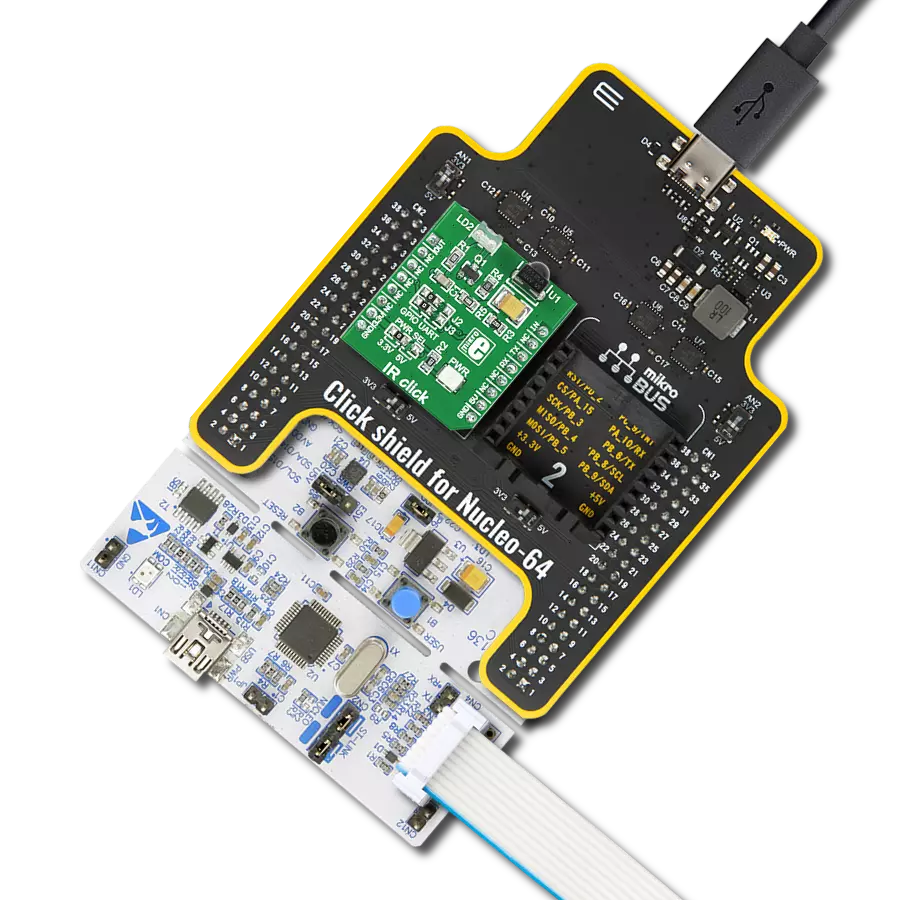Detect ambient light, UV index, and flicker with precision for optimized brightness control and environmental monitoring
A
A
Hardware Overview
How does it work?
Light 4 Click is based on the TSL2585, an ambient light sensor with UV and light flicker detection capabilities from ams OSRAM. This sensor's unique architecture incorporates photopic, infrared (IR), and ultraviolet (UV) photodiodes, enabling it to perform multiple sensing functions concurrently. Applications of Light 4 Click include automatic display brightness management in changing light conditions, UV index estimation for environmental monitoring, and camera assistance for auto exposure and flicker detection. This versatility makes it an excellent choice for consumer electronics, outdoor applications, and camera systems that require precise light and UV sensing. The TSL2585's innovative design ensures it can continuously monitor ambient light levels under any glass type. Additionally, its flicker detection functionality operates parallel with ambient light sensing, using the same photodiodes to capture data for calculating flicker frequencies. The sensor buffers this data, allowing a host MCU to process
and detect flicker from various light sources. Its photopic photodiode is equipped with an optimized filter that mimics the human eye's response to visible light, while a dedicated IR channel allows for accurate ambient light measurement and irradiance calculation of various light sources. Moreover, the UV photodiode is fitted with a band-pass UV filter, which, combined with the photopic and IR channels, allows for the estimation of the ambient UV index. An external MCU running specialized algorithms can further process this information to provide real-time UV index readings. This Click board™ uses a standard 2-wire I2C interface to communicate with the host MCU, supporting Standard mode with up to 400kHz of frequency clock. It also provides interrupt-driven events through the INT pin on the mikroBUS™ socket, triggered when ALS results exceed or fall below user-configured threshold levels. The SNC pin on the mikroBUS™ socket serves a dual-purpose function. It can be used as a synchronization input,
allowing the sensor to align its measurements with external events or signals, ensuring accurate timing and coordination in applications that require precise synchronization. Alternatively, it can also function as a general-purpose open-drain input/output pin, providing additional flexibility for various control or signaling tasks, depending on the application's specific requirements. The TSL2585 does not require a specific Power-Up sequence but requires a voltage of 1.8V for its interface and logic part to work correctly. Therefore, a small regulating LDO, the AP2112, provides a 1.8V out of 3.3V mikroBUS™ power rail. This Click board™ can be operated only with a 3.3V logic voltage level and activated via the EN pin of the mikroBUS™ socket, providing a power-enabling function. The board must perform appropriate logic voltage level conversion before using MCUs with different logic levels. Also, it comes equipped with a library containing functions and an example code that can be used as a reference for further development.
Features overview
Development board
6LoWPAN Clicker is a compact starter development board that brings the flexibility of add-on Click boards™ to your favorite microcontroller, making it a perfect starter kit for implementing your ideas. It comes with an onboard 32-bit PIC microcontroller, the PIC32MX470F512H from Microchip, a USB connector, LED indicators, buttons, a mikroProg connector, and a header for interfacing with external electronics. Along with this microcontroller, the board also contains a 2.4GHz ISM band transceiver, allowing you to add wireless communication to your target application. Its compact design provides a fluid and immersive working experience, allowing access anywhere
and under any circumstances. Each part of the 6LoWPAN Clicker development kit contains the components necessary for the most efficient operation of the same board. In addition to the possibility of choosing the 6LoWPAN Clicker programming method, using USB HID mikroBootloader, or through an external mikroProg connector for PIC, dsPIC, or PIC32 programmer, the Clicker board also includes a clean and regulated power supply module for the development kit. The USB Micro-B connection can provide up to 500mA of current for the Clicker board, which is more than enough to operate all onboard and additional modules, or it can power
over two standard AA batteries. All communication methods that mikroBUS™ itself supports are on this board, including the well-established mikroBUS™ socket, reset button, and several buttons and LED indicators. 6LoWPAN Clicker is an integral part of the Mikroe ecosystem, allowing you to create a new application in minutes. Natively supported by Mikroe software tools, it covers many aspects of prototyping thanks to a considerable number of different Click boards™ (over a thousand boards), the number of which is growing every day.
Microcontroller Overview
MCU Card / MCU
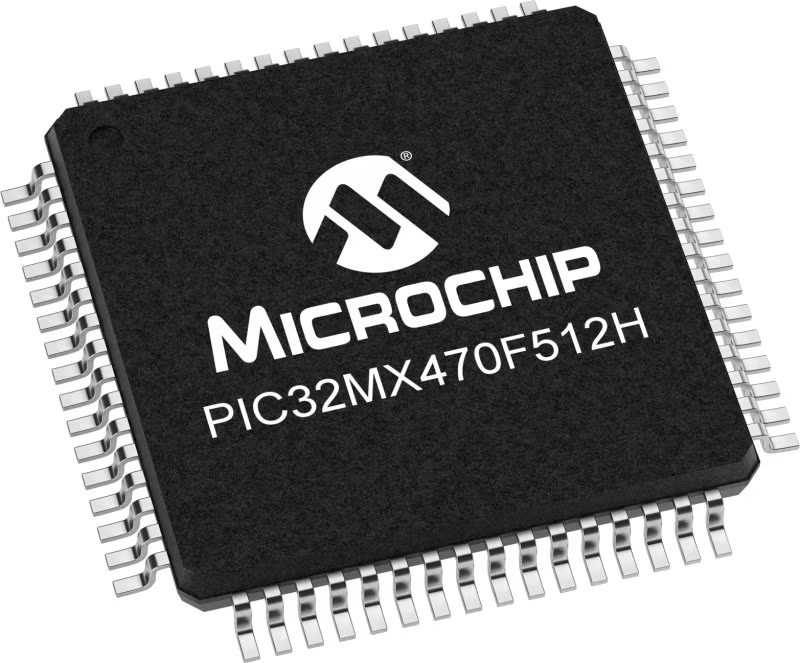
Architecture
PIC32
MCU Memory (KB)
512
Silicon Vendor
Microchip
Pin count
64
RAM (Bytes)
131072
Used MCU Pins
mikroBUS™ mapper
Take a closer look
Click board™ Schematic

Step by step
Project assembly
Track your results in real time
Application Output
1. Application Output - In Debug mode, the 'Application Output' window enables real-time data monitoring, offering direct insight into execution results. Ensure proper data display by configuring the environment correctly using the provided tutorial.

2. UART Terminal - Use the UART Terminal to monitor data transmission via a USB to UART converter, allowing direct communication between the Click board™ and your development system. Configure the baud rate and other serial settings according to your project's requirements to ensure proper functionality. For step-by-step setup instructions, refer to the provided tutorial.

3. Plot Output - The Plot feature offers a powerful way to visualize real-time sensor data, enabling trend analysis, debugging, and comparison of multiple data points. To set it up correctly, follow the provided tutorial, which includes a step-by-step example of using the Plot feature to display Click board™ readings. To use the Plot feature in your code, use the function: plot(*insert_graph_name*, variable_name);. This is a general format, and it is up to the user to replace 'insert_graph_name' with the actual graph name and 'variable_name' with the parameter to be displayed.

Software Support
Library Description
This library contains API for Light 4 Click driver.
Key functions:
light4_write_reg- This function writes a byte into the selected register by using I2C serial interface.light4_sw_reset- This function is used to perform software reset of Light 4 Click.light4_read_channel_data- This function is used to read data from selected channel of Light 4 Click.
Open Source
Code example
The complete application code and a ready-to-use project are available through the NECTO Studio Package Manager for direct installation in the NECTO Studio. The application code can also be found on the MIKROE GitHub account.
/*!
* @file main.c
* @brief Light 4 Click example
*
* # Description
* This example demonstrates the use of Light 4 Click board by measuring
* the ambient light level in Lux.
*
* The demo application is composed of two sections :
*
* ## Application Init
* Initializes the driver, performs the Click default configuration
* and checking I2C Communication by reading Device ID.
*
* ## Application Task
* Reading channel 0 ambient light level in lux once per
* second and displaying it on the UART terminal.
*
* @author Stefan Ilic
*
*/
#include "board.h"
#include "log.h"
#include "light4.h"
static light4_t light4;
static log_t logger;
void application_init ( void )
{
log_cfg_t log_cfg; /**< Logger config object. */
light4_cfg_t light4_cfg; /**< Click config object. */
/**
* Logger initialization.
* Default baud rate: 115200
* Default log level: LOG_LEVEL_DEBUG
* @note If USB_UART_RX and USB_UART_TX
* are defined as HAL_PIN_NC, you will
* need to define them manually for log to work.
* See @b LOG_MAP_USB_UART macro definition for detailed explanation.
*/
LOG_MAP_USB_UART( log_cfg );
log_init( &logger, &log_cfg );
log_info( &logger, " Application Init " );
// Click initialization.
light4_cfg_setup( &light4_cfg );
LIGHT4_MAP_MIKROBUS( light4_cfg, MIKROBUS_1 );
if ( I2C_MASTER_ERROR == light4_init( &light4, &light4_cfg ) )
{
log_error( &logger, " Communication init." );
for ( ; ; );
}
if ( LIGHT4_ERROR == light4_default_cfg ( &light4 ) )
{
log_error( &logger, " Default configuration." );
for ( ; ; );
}
uint8_t dev_id = 0;
light4_read_reg ( &light4, LIGHT4_REG_ID, &dev_id );
if ( LIGHT4_DEVICE_ID == dev_id )
{
log_printf( &logger, " Device ID: 0x%.2X \r\n", ( uint16_t ) dev_id );
}
else
{
log_error( &logger, " Read error." );
for ( ; ; );
}
log_info( &logger, " Application Task " );
}
void application_task ( void )
{
float channel_data = 0;
err_t error_flag;
error_flag = light4_read_channel_data( &light4, LIGHT4_CHANNEL0_SEL, &channel_data );
if( LIGHT4_OK == error_flag )
{
log_printf( &logger, " Data: %.2f Lux \r\n", channel_data );
}
else if ( LIGHT4_ANALOG_SAT == error_flag )
{
log_error( &logger, " Analog saturation \r\n" );
}
Delay_ms ( 1000 );
}
int main ( void )
{
/* Do not remove this line or clock might not be set correctly. */
#ifdef PREINIT_SUPPORTED
preinit();
#endif
application_init( );
for ( ; ; )
{
application_task( );
}
return 0;
}
// ------------------------------------------------------------------------ END

















